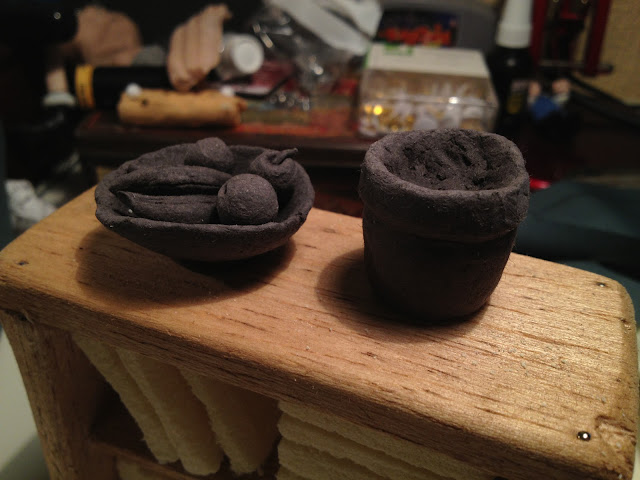I haven't really put a close up photo of Edgar on here. So here we go! I tried to use a 'flicking' method to get freckles, but it didn't work as you can maybe tell from the "birth mark" on end of his nose which was absolutely on purpose....... In the end i painted each one of them on individually.
The books had book ends added on to them (just printed off the internet) (im really sorry copyright police) and I painted the plant pot and found the top of a model pine tree in the studio. I also painted the fruit.
And here it is! the finished set. I still need to fix everything down. The mug and lamp to the right hand side i am probably least happy with. Nothing special really so didn't justify a close up shot. I'll hopefully start animating on monday once i've broken down my sound and made all of my replacement mouthes.



















































